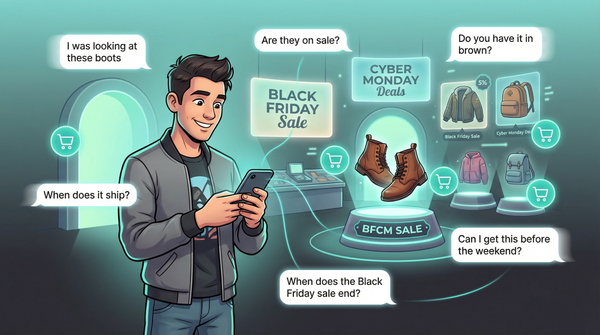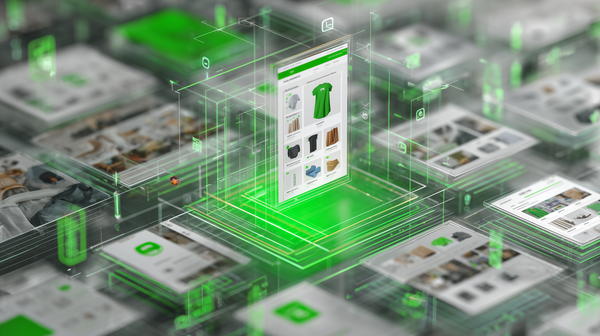Shopify Just Put OpenAI's ChatGPT to Work in Your Storefront
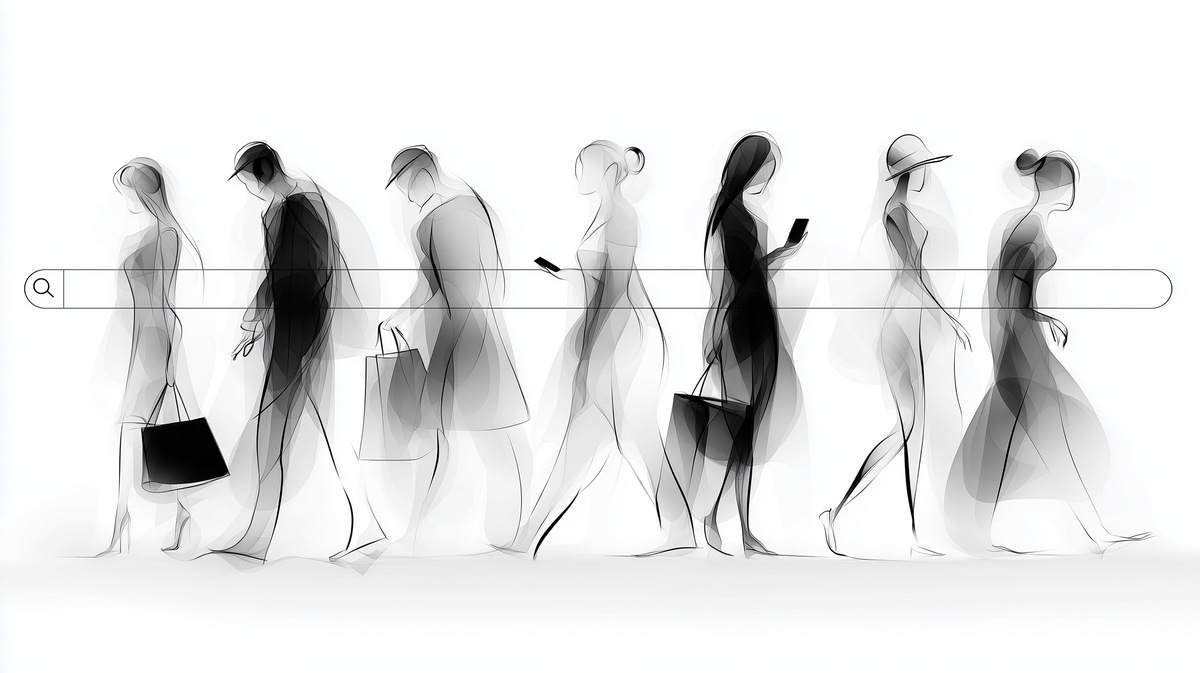
OpenAI Just Put a Sales Rep Inside Your Shopify Store
Last week, OpenAI and Shopify quietly rolled out something with big implications: a native AI shopping assistant that can live on your storefront, answer product questions, guide discovery, and complete purchases—all in natural language.
It uses Shopify’s Storefront Managed Compute Platform and OpenAI’s new “Responses” API, giving DTC brands the power to deploy a ChatGPT-style concierge without custom dev work. Customers can now type “show me a running jacket under $100” and get personalized recs, add to cart, and go straight to checkout—all without touching your site nav (Shopifreaks).
The timing tracks: customer expectations for speed are at an all-time high, July 2025 budgets are stretched thin, and the race to automate CX without losing brand voice is heating up.
Shopify AI Assistants: What They Actually Do
The assistant connects to your live product catalog and uses OpenAI’s Responses model to chat with shoppers like a human rep. It can:
- Search and compare products
- Surface sizing, pricing, inventory info
- Remember customer preferences during the chat
- Add items to cart and generate checkout links
In Shopify’s own test store, the bot helped a customer compare helmets and jerseys, remembered their style preferences, and completed a purchase—no dropdown menus, no clunky UX (Shopifreaks).
It’s fast, on-brand (if prompted right), and always on. No more “Sorry, we’re offline.”
“The cost of any software effort is essentially trending toward zero... You can provide 24/7 support at a couple dollars of tokens instead of a thousand-dollar service fee.”
—Alex Pilon, Shopify (Shopify)
Conversion Lift or Early-Stage Gimmick?
Initial feedback from operators is cautiously optimistic.
“I played around with it for a few minutes on one of my stores, and it seems pretty easy to implement. However, it’ll require some testing before we go live.”
—Paul Drecksler, Shopifreaks newsletter (Shopifreaks)
Setup is lightweight: merchants can spin one up via OpenAI Playground using just their store URL and a toggle for Shopify’s compute API (LinkedIn).
But bugs are still surfacing. Some stores saw errors when attempting checkouts or pulling catalog data. One dev called it “definitely V1”—usable, but with gaps to close before scaling site-wide (LinkedIn).
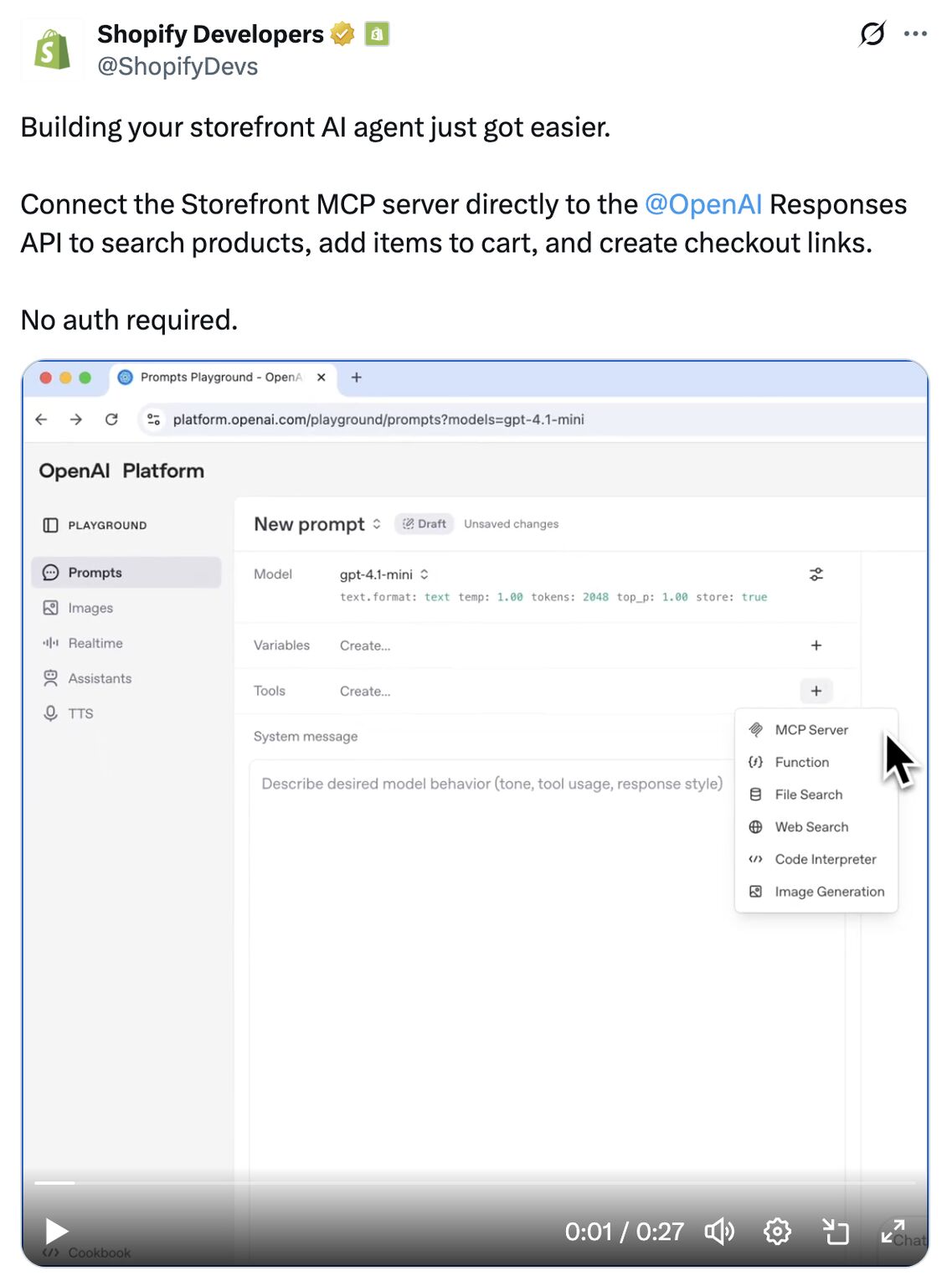
The big risk? Bad answers. If your catalog lacks detailed descriptions or clean tags, the AI may hallucinate—or worse, recommend irrelevant or out-of-stock items.
Smart brands will treat the bot like a junior hire:
- Feed it accurate product data
- Restrict its knowledge base
- Run chat simulations to check for red flags
If it sounds off-brand or gets pushy, tweak the prompt. You can steer tone and guardrails pretty easily.
Will Shoppers Use It?
Short answer: it depends.
For quick-fire questions—fit, materials, shipping—AI is fast and frictionless. According to Master of Code’s 2025 report, 62% of consumers are fine with bots for basic service tasks, and 87% rated chatbot interactions neutral or positive.
But trust drops when the stakes get higher. For complex, expensive, or highly personal purchases, 71% of customers still prefer a human agent.
And that’s where the real opportunity lies: if you care about protecting your brand image—and delivering the kind of personal touch that earns repeat customers—this is where tools like LiveRecover make the difference. AI can guide the first steps, but when it’s time for nuance, a real person following up with contextual, peer-to-peer SMS is what builds trust.
That human fallback isn’t a failure of automation—it’s a feature. And in 2025’s race for smarter CX, combining speed with soul is what sets retention-first brands apart.
The Broader Trend: AI Is Rewriting the CX Stack
Shopify’s not alone. AI shopping assistants are rolling out across the board:
- OpenAI is working on in-chat payments for ChatGPT, with reports of a native checkout system that could turn the chat window into a full ecommerce channel (Reuters).
- ChatGPT itself may soon let users discover and buy Shopify products without visiting a brand’s website at all (Reddit).
- Shopify CEO Tobi Lütke told teams to “hire an AI before a human,” and a full “ChatGPT Sales Channel” is rumored to launch in the app store this quarter (STRYDE).
- Google, Amazon, and Microsoft are all racing to build AI-first shopping tools, with Copilot and Bard pushing commerce integrations, and Perplexity already running a shoppable AI assistant with Shopify product feeds (PYMNTS).
Bottom line: we’re moving from website-driven shopping to agent-driven commerce. Fast.
What DTC Brands Should Do Now
If you’re a mid-size brand on Shopify, this is a low-lift, high-ceiling experiment. Set up the assistant. Test it. Throw questions at it that real customers ask. Then refine.
Do this:
- Train the AI on actual FAQs
- Inject brand tone into the prompt
- Give it real product use cases to test for accuracy
- Route “Contact us” fallbacks to your real support team (especially if you use LiveRecover for human SMS handoff)
Don’t do this:
- Launch it without testing the checkout experience
- Assume it can upsell like a human
- Leave your product catalog unstructured
If it’s messy, the assistant will be too.
Panagiotis Kriaris summed it up well:
“We’re clearly moving from search engines to shopping agents.”
(LinkedIn)
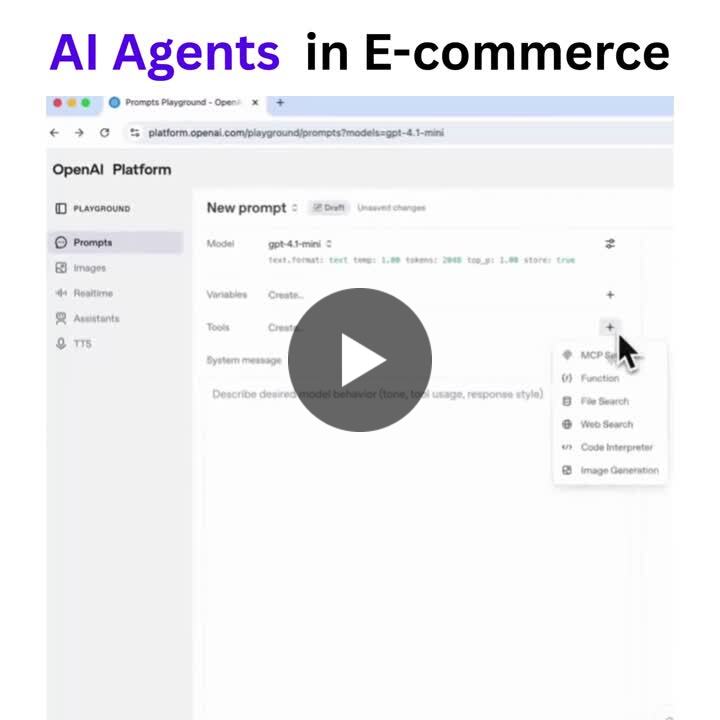
That shift is no longer theoretical. It’s live in your Shopify dashboard.
Subscribe for weekly DTC insights.



